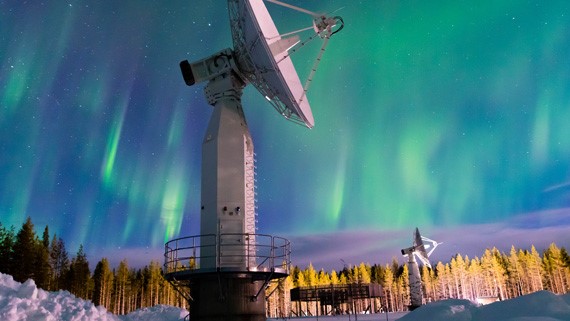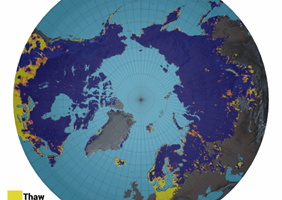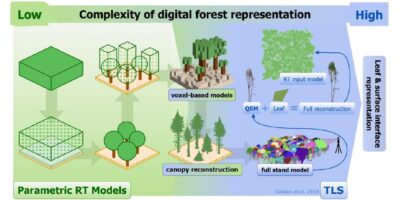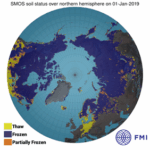Satellites are a superior device to observe a wide range of environmental conditions and changes. Satellite observations provide information on air pollution, amount of carbon dioxide, or the scope of the Arctic sea ice. Space technology helps us better understand the conditions on Earth.
Space and Earth Observation Centre Director Jouni Pulliainen, what does the Finnish Meteorological Institute do in space?
“Satellites provide information on changes in the northern areas. The Arctic Space Centre of the Finnish Meteorological Institute in Sodankylä receives, archives and stores satellite data, which is further refined into products and services.
The Finnish Meteorological Institute produces and disseminates information on environmental and climate changes in the northern regions among the European Organisation for the Exploitation of Meteorological Satellites EUMETSAT, European Space Agency (ESA), European Union programmes, and research organisations and companies in different countries. Nationally, the focus is on services for administrative applications. Observation data can be used to develop environmental services, such as ice and flood maps, or to verify policy measures, such as the implementation of climate objectives as defined in the Paris Agreement.”
Space Weather Service improves aviation safety
“Changes in space weather can cause interference with radio or satellite operations and positioning connections, increase air passengers’ radiation exposure during transpolar flights, or cause problems with electricity transmission systems. The Finnish Meteorological Institute follows space weather 24 hours a day, every day of the year, and produces information on disruptions for the benefit of air traffic and societal safety.
The long-term goal of space weather research is to develop the ability to predict space weather and its most extreme phenomena in particular, in a similar way to terrestrial weather forecasts.”
Space technology of a high international standard is developed in Finland
“Metering devices developed by the Finnish Meteorological Institute are utilised in the study of planets. Instruments developed by the Finnish Meteorological Institute are currently measuring moisture and air pressure on the surface of Mars. Measuring devices are also developed for studying other planets, such as Jupiter.
The better we know the conditions on planets similar to Earth, the better we will learn to understand our own our planet.”
Cooperation with the European Space Agency enables Finland’s active space activities
“Close cooperation with the European Space Agency ESA is essential for the development of the Finnish space sector. The core functions of European research take place within the framework of ESA. As a result, Finland’s participation in large-scale EU projects in the space sector is not possible without the foundations created by ESA.
Active cooperation with ESA is important for Finland in order to make sure that we stay in the forefront of future space exploitation and technological development of the space sector.”
Further information:
Space and Earth Observation Centre, Director Jouni Pulliainen, jouni.pulliainen@fmi.fi








Leave a Reply
You must be logged in to post a comment.